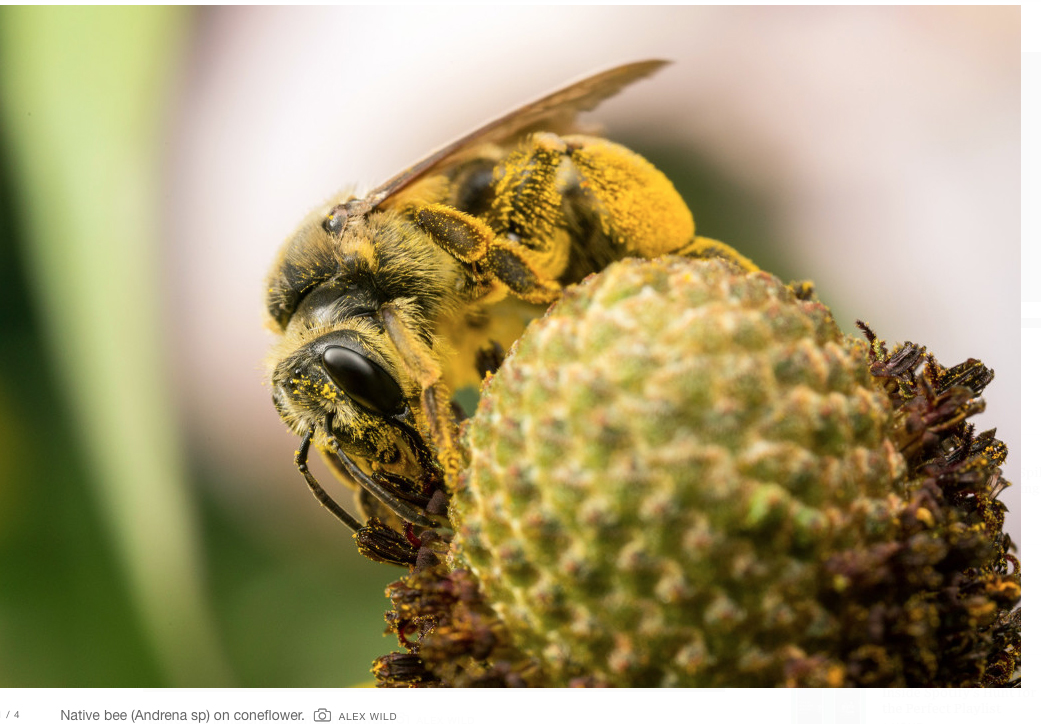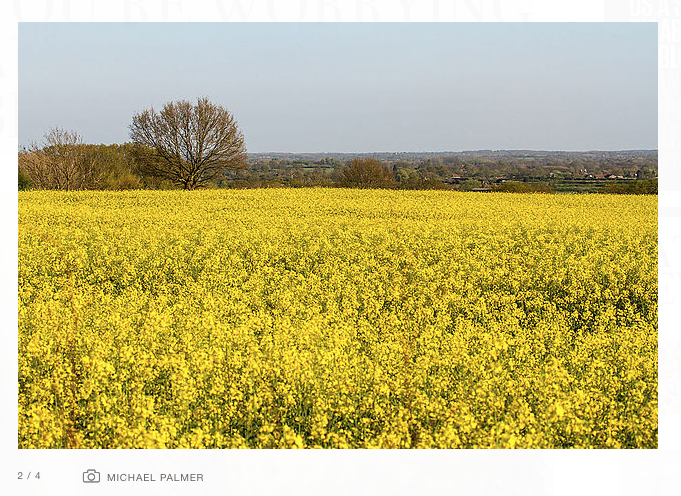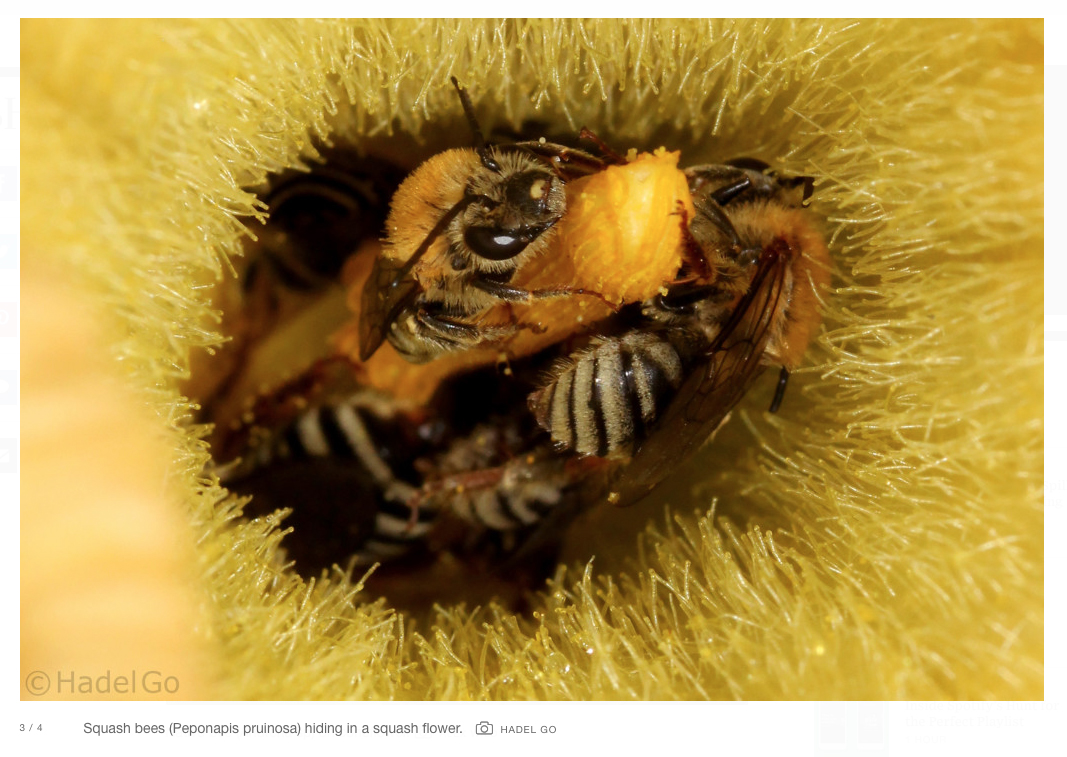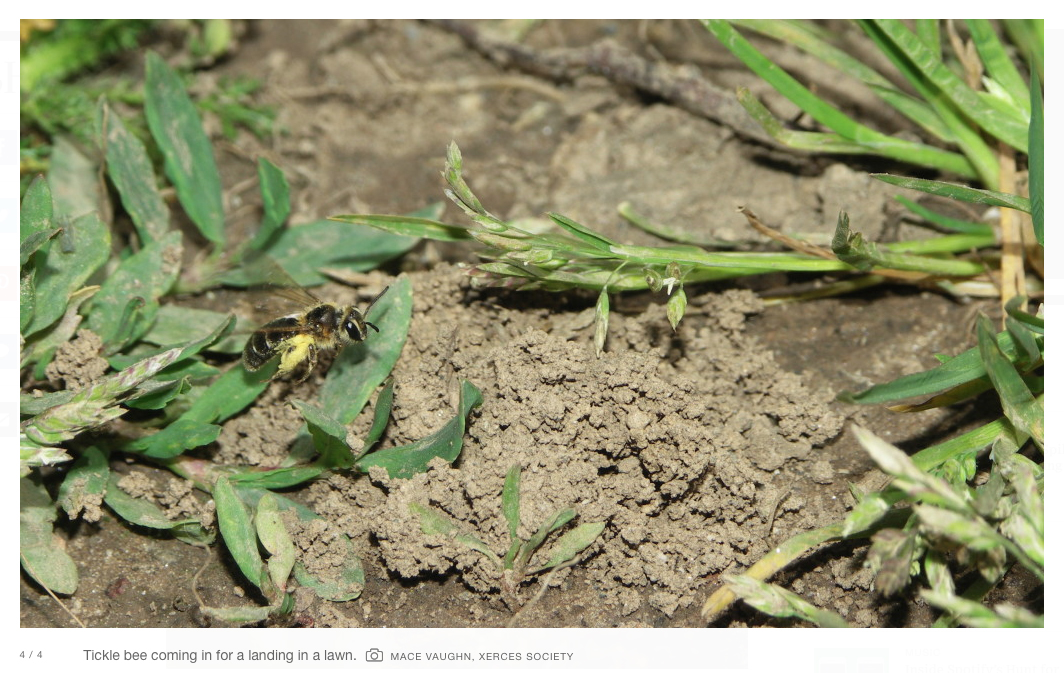
By: Gwen Pearson April 29, 2015
“Save the Bees!” is a common refrain these days, and it’s great to see people interested in the little animals critical for our food supply around the globe. But I have one quibble: you’re talking about the wrong bees.
Honey bees will be fine. They are a globally distributed, domesticated animal. Apis mellifera will not go extinct, and the species is not remotely threatened with extinction.
The bees you should be concerned about are the 3,999 other bee species living in North America, most of which are solitary, stingless, ground-nesting bees you’ve never heard of. Incredible losses in native bee diversity are already happening. 50 percent of Midwestern native bee species disappeared from their historic ranges in the last 100 years. Four of our bumblebee species declined 96 percent in the last 20 years, and three species are believed to already be extinct. A little part of me despairs when I read in a scientific paper: “This species probably should be listed under the Endangered Species Act if it still exists.”
The Bee News You Are Missing
Last week, the big bee news was a suggestion nicotine-derived pesticides can cause honey bee addiction. But you might have missed another important paper that looked at the same group of pesticides on both honey bees and native bees. This massive study paired multiple plantings of seeds coated with a neonicotinoid pesticide with seed treated only with a fungicide. This was one of the largest tests to date of how pesticides and bees interact in a real-world situation, outside a laboratory.
Seeds of all sorts are commonly treated with neonicotinoid pesticides as a preventative treatment. Neonicotinoid pesticides circulate in plant tissues, so any insect munching on the seedlings will be stopped. Unfortunately, the pesticide remains in the plants as they flower, and bees of all types may pick up the chemicals in pollen and nectar. The experimenters used a crop that is attractive to bees — oilseed rape, used to make canola oil — as their test plant.
Honey bees weren’t affected by the seed treatments. But wild bees were affected, and in a big way. Wild bee density in the treated fields was half that of the untreated fields. Bumble bee colonies grew more slowly, and produced fewer queens. Solitary bee nests disappeared from the treated fields completely.
Solitary bees are the most common type of wild bee; they don’t live in a hive. A female bee usually makes a hole in the ground or in a hollow stem, where she lays her eggs and then provisions each grub with a ball of pollen to snack on after they hatch. They are the ultimate single mothers. In this study, no mason bees (Osmia bicornis) began brood cells in the seed treated fields. None.

We don’t know why the mason bees abandoned what should have been an all-you-can-eat yellow flower buffet, but it definitely re-emphasizes the point that all bees are not the same. We can’t keep using commercial honey bees as the measure of what is toxic; while honey bees certainly have bad years, they have a whole crew of beekeepers and researchers providing support to them. But native bees are on their own; they fly solo.
This research used one of the lowest active doses of pesticide that a bee might encounter in a real agricultural field. The seed treatment is applied well before the crop is sown; but the tiny amount of pesticide that remains in the plant is enough to cause problems for female solitary bees.
After several years of intensive research on honey bees and colony collapse disorder, we know a lot about what kills honey bees. We don’t have that broad knowledge base for our native bees. We don’t even know what is a lethal dose of pesticide for many solitary bees.
The 80,000 bees in a honey bee colony create a strong buffering effect. Honey bee colonies can often take a pesticide exposure in stride. Solitary bees can’t.
Honey Bees are Kinda Slackers
The evidence is clear that many native wild pollinators are declining. That wouldn’t be a big deal, if commercial honeybees could pick up the slack. They can’t.
Managed honey bee colonies supplement the work of natural wild pollinators, not the other way around. In a study of 41 different crop systems worldwide, honeybees only increased yield in 14 percent of the crops. Who did all the pollination? Native bees and other insects.
A whole host of little blueberry bees, squash bees, and orchard bees co-evolved with many of our fruits and vegetables. It makes sense they would be good at pollination.

In watermelons, native bees do 90 percent of the pollination.
Native bees improve fruit production in apples. Native bee pollination creates twice as much fruit as honey bees in blueberries. In tomatoes, native bee species increase fruit production significantly.
Honey bees aren’t physically big enough to successfully pollinate tomatoes; it takes a burly bumble bee to do the job. In a lot of crops, specialist pollinators do a better job than generalist honey bees.
Ecological Homogenization
Part of the problem for our native bees is our human desire for neatness and uniformity. Pretty lawns with no bare spots. Non-flowering grass, or pollen-less flowers. Paved spots where a sand bank or brush pile may have been before. All places where a native bee might have made her home or found a snack.
We alter everything about our environment—water, light, plants, even the bacterial and fungal communities around us. Bees can’t just appear for a week, pollinate your plants, and disappear. They have to have something to eat the rest of the year, and a place to live. Habitat loss, pesticides, and decreased floral diversity all take a toll on these little animals.
Conservation often focuses on purchasing special pieces of land that haven’t been trampled or paved yet. That’s not enough. We can’t “save the bees” by conserving little bits of habitat here and there in national parks. We have to include space for them in our agricultural lands, city parks, and yards.
I asked Aimee Code, Pesticide Program Coordinator of the Xerces Society, a group focusing on conservation of native bees and insects, for her recommendations. “Our native bees, so vitally important in our ecosystems, are more sensitive to pesticides. Any person who has even a postage stamp yard can stop using pesticides, put in more native plants, …and leave some wild areas for bees to to nest in the ground. It is that easy to help make a difference.”
Humans and Bees Can Live Together
For a great example of how native bees and humans can live together in an urban setting, check out this Portland, Oregon school. They have adopted solitary mining bees as their mascots, the Tickle Bees. It didn’t take massive landscaping to make this change; it just took a willingness to share and let things be slightly untidy.
Right inside your lawn, there are wonders. Stop and look.
See original article here. "You're Worries About the Wrong Bees"

